- Home
- Robert Graysmith
Zodiac Unmasked: The Identity of America's Most Elusive Serial Killer Revealed Page 2
Zodiac Unmasked: The Identity of America's Most Elusive Serial Killer Revealed Read online
Page 2
A creak at the side screen door alerted Bernice, and she hastened to fix supper. Wriggling chipmunks squealed, clinging to Starr’s broad swimmer’s shoulders. Giving his mother’s back a disdainful look, and still wearing his living-fur wrap, Starr dropped down into his cellar room. Bernice was most fearful of what her son stored in that basement. In that dreary tomb ticked something he had once called his “death machine.”
It had been almost two years since Zodiac had murdered a taxi driver in San Francisco—longer than that since he shot and stabbed the others. But in all that time Homicide Inspectors Bill Armstrong and Dave Toschi (pronounced Tahs-kee) had not forgotten the elusive Zodiac. Twenty-nine minutes away from the turbulent household on Fresno Street, past the lonely Emeryville mudflats and just across the Bay Bridge, they continued to labor at the Hall of Justice. On the street below, the red-neon “OK Bail Bonds” sign flashed twenty-four hours a day. “Zodiac actually set out a challenge,” Inspector Toschi recalled. “‘I’m better than you,’ he taunted us. ‘Smarter than you,’ he said. ‘Catch me if you can.’ We intended to do just that.”
As Zodiac terrorized the Bay Area, inundating local papers with his chilling letters with bizarre references to popular culture, he invariably belittled the SFPD for failing to halt his string of murders. Zodiac had made it personal, tantalizing them with masterly cryptograms—some so unbreakable that they baffled the brightest code-breakers the FBI, NSA, and CIA could field. All but two homicides attributed to him involved couples—young students killed in or around their cars on weekends. He hinted at unknown murders, past and present.
“Zodiac struck out in savage rage,” speculated one psychiatrist, “against those who flaunted an intimacy he craved with an intensity only the deeply frustrated human can imagine.” Sex was never a factor in his motiveless attacks. Sadism was; the more pain he caused, the more pleasure he felt. Directly after an attack, Zodiac was compelled to gloat, pitilessly writing or phoning his victims’ families, breathing silently into their ears—a sound like the rushing of wind. He used a different weapon each time, and when possible took something from each victim—car keys, a bloody shirt, a wallet—trophies. He still had them somewhere. Now if only Toschi and Armstrong could find them.
Zodiac’s rampages occurred at dusk (when he sometimes wore a grisly executioner’s costume) or at night under a new or full moon. Bodies of water and places named after water drew him as metal to a lode-stone. Perhaps Zodiac was a sailor, swimmer, or boatman. Whatever he was, he knew Vallejo intimately—its back lanes and pebbled shortcuts, its black country roads and echoing quarries. Toschi was convinced he was a longtime resident of Water Town.
And so Toschi and Armstrong developed new facts and shuffled yellow sheets under the burning fluorescent lights of their fourth-floor office. They watched the minute hand of the big clock jerking intermittently, like a barely beating heart. At times it hardly seemed to move. Toschi leaned back in his swivel chair, its springs complaining loudly. “What we need now,” said Toschi, looking across at Bill Armstrong, “is a good snitch.” Between the ticks of that clock something happened—the detectives were about to come up with their most important lead yet in Zodiac’s seemingly endless reign of terror. It would arrive by letter, the killer’s chosen medium.
Thursday, July 15, 1971
Manhattan Beach is northernmost in a succession of all-American beach towns running south from LAX to the Palos Verde Peninsula. It roosts some twenty miles southwest of downtown Los Angeles. Scores of wealthy white Angelenos inhabit the rows of pastel cottages hugging its shores. The town’s main drag is Highland, and at 2:50 P.M. bronzed surfers were catching the best waves of the day as an unmarked cop car hurtled south along the broad avenue. Detective Richard Amos and his partner, Art Langstaff, were following up a tip that had originated in Pomona. Two Torrance men had information about Zodiac.
The skies were smog-tinged, the air muggy, but traffic was light. Amos sped east on Artesia, then spun onto lengthy Hawthorne Boulevard. A red light halted them. Impatiently, Amos drummed the wheel. The car idled, pumping exhaust onto the shimmering asphalt. He considered Zodiac—uncaught and insubstantial as vapor. Years of effort, and yet no one seemed able to lay a hand on him.
Both informants were waiting in front of Science Dynamics, a computer bookkeeping business, as Amos pulled to a stop. Santo Paul Panzarella, “Sandy” to his friends, was a Lawndale resident and owner of the company. His employee and college roommate, Donald Lee Cheney, was the more anxious of the pair. The South Bay investigators had no sooner climbed out than Panzarella and Cheney got to the point—they knew the identity of Zodiac.
Out of the stifling heat, they named their man—Robert Hall Starr. They had known Starr almost ten years, since 1962, known him while attending Cal Poly in Pomona with Starr’s brother, Ron. Cheney had last seen Starr on a day as cold as today was blistering. Though Panzarella had made the call that had summoned them, it was Cheney who told them the story.
“It was New Year’s Day afternoon,” Cheney said. “I was living in the Bay Area then—I drove to Starr’s home on Fresno Street in Vallejo. I’m positive my visit was not later than January 1, 1969, because I moved to Southern California on that day. I remember specifically it was the New Year’s after Starr was fired from Valley Springs School up near the Mokelumne River. That had been in the early summer. As to Starr’s reason for leaving Valley Springs, he hemmed and hawed more than he said anything, and gave me some kind of lame excuse about it, but I never heard the straight story. I helped him move back to Fresno Street. On New Year’s Day I came over to his house because my wife and I had been arguing and I just had to get out of the house.
“We had gone to his apartment—at this time it was a one-car garage that had been converted into a room. You didn’t step down, the basement lair came later. You just walked in at ground level. It had three exterior walls—a window in the front, a window in the side, a small window in the back. There was a bathroom at the rear which had a window which let some light in there. The other part of the house was fairly well isolated from that room. I don’t remember ever hearing activity unless the mother was cooking. It was early afternoon.”
Starr read a lot of science fiction. On the table that day lay the August 1967 Fact and Amazing Science Fiction open to Jack Vance’s 15,000-word story, “The Man from Zodiac.” On their last hunting trip Starr had talked about science fiction with Cheney. On several previous occasions he and Cheney had gone hiking and hunting in the woods northeast of San Francisco. In the twilight, rifles lowered, Starr had shared long, sometimes unsettling, discourses with him—talks about death. He was a huge silhouette in the dark, and his eyes glittered in the firelight as he expounded bizarre theories. “With Starr,” said Cheney, “you just get into conversations about ‘What if this?’ and ‘What if that?’ He had a way about him.”
On their final hunting trip Starr had abruptly changed the subject from science fiction to something totally unrelated. He first mentioned hunting, then guided the conversation to an adventure story he had read in the eleventh grade—“The Most Dangerous Game.” Richard Connell’s taut, classic tale concerned the hunting of men in a forest with bows and arrows and guns.
“Have you ever thought of hunting people?” said Starr.
“What?” said Cheney. Cheney recalled other weird conversations with his friend before, and took this one in stride. He was well acquainted with Starr’s way of drawing people into his own interior fantasy world.
“It would be great sport to hunt people,” Starr elaborated in the night, using personalized expressions such as “If I did this” or “If I did that . . .” At times he cast his remarks in the form of a novel he intended to write someday. He was a powerful man, gesticulating in the dark.
“Beneath that fat,” said Cheney, “was steel.”
That day Starr’s eyes strayed to the unique watch he had gotten on his birthday only days before. “He showed me the watch first,” Cheney told th
e detectives. “I remember the unusual logo symbol just above the pinion in the dial. When he showed the watch to me, it was pretty much like he wanted an opinion about the quality of the watch. ‘I don’t think this is a very good watch,’ he said. ‘Well, it’s a fine Swiss watch,’ I told him. ‘That’s a quality watch.’”
Starr began talking about his career. “It’s time to look for a new job,” he said. “I’m thinking about becoming a private eye, a private investigator like ‘Mike Hammer.’ That would be fun and interesting. I’m looking for something I can do on my own without having to be hired.”
Cheney thought this was because he was having problems getting hired. “You don’t really have the training,” said Cheney. “And you really don’t have a base of people who know who you are that you can get business from.” Cheney was not so much amazed at Starr’s idea, but honestly concerned that his frend was ill-equipped for such a job. Starr seemed to read his thoughts.
“Well, maybe I can create my own business by being a criminal,” said Starr, “And if I was, here’s what I’d do.”
Starr suggested he might go to a lovers’ lane area to seek out victims at night—attach a flashlight to a gun barrel and shoot them. “I would use the light as an aiming device,” he said, “enabling me to walk up and gun down people in total darkness. As the shootings would be without motive, imagine how difficult such murders would be for the police to solve. They would never catch you. You could then send confusing letters to the police”—he might have said “authorities,” Cheney amended in an aside to Amos and Langstaff—“letters to harass and lead them astray.
“And I would sign them ‘Zodiac.’”
“‘Zodiac,’” said Cheney. “Why that? Why not something else? That’s stupid.” Cheney paused and said to the investigators, “I might have used the phrase ‘childish.’ I don’t remember exactly. Whichever word I spoke, it had a remarkable effect on him. He became emotional, very emotional, and I was sorry I had said anything at all.”
“I don’t care what you think,” Starr had snapped. “I’ve thought about it a long time. I like the name ‘Zodiac’ and that’s the name I’m going to use. Yes, I would call myself ‘Zodiac.’”
As Starr queried him about methods to disguise his handwriting and makeup to disguise himself, Cheney’s eyes roved over Starr’s room—to the disheveled piles of papers and maps, and the rows of books on aviation and sailing lining the walls, the stacks of Mad magazine. In the shadowy room, among the clutter, he observed Starr’s Ruger single-six and Harrington Richards long-barrel. “The Harrington Richards was kind of old and battered and had the nine-shot cylinder,” he recalled. “That was his arsenal as far as I knew, though he did come up with a rifle for deer hunting from somewhere, that and a pair of .22-caliber revolvers.”
On December 20, 1968, twelve days earlier, Zodiac had used a .22-caliber semiautomatic J. C. Higgins Model 80 to murder two teenagers out on Vallejo’s lonely Lake Herman Road. These were his first known Northern California murders. The killer utilized .22-caliber Super X copper-coated long-rifle Winchester Western ammo—the same brand used in double murders south of Lompoc in 1963. “Earlier in the day,” added Cheney, “he took me out Lake Herman Road and pointed out a roadside turnout. He didn’t signify its importance, but I think that’s where the two kids had recently been killed.”
Starr discussed shooting the tire off a school bus and picking off “the little darlings.” He would shoot them as “they came bounding out” of the bus. Cheney doubted his friend would actually be doing these things. “It was like we were talking about a plot for a book or something in that order,” he told the detectives. “It was not quite as if we were talking about real events. He kind of slipped in and out of the present. We were having that kind of conversation. It gave me the shivers a little bit. Even then. That was the last time I ever saw him. I knew it was in my mind that I wasn’t going to see him again.”
When Cheney got home that night, he told his wife, Ann, his friend was “acting strange.” “I moved quite shortly after that,” Cheney concluded. “I had the opportunity for a job in Los Angeles. It didn’t have to do with him. It had to do with me finding work.”
There was silence. His words seemed to the detectives to be reasonable enough, the kind of things an honest man might say. The afternoon had waned. The detectives had spent over an hour with the men. Both Cheney and Panzarella cautioned Amos and Langstaff as they left. “He is a very intelligent man, but also a very impatient person. We think he carries a weapon at all times.”
Returning to their headquarters on 15th Street, the detectives asked Criminal Identification and Investigation (CI&I) in Sacramento to expedite Starr’s “yellow sheet,” a record of previous arrests, to them by Teletype. While they waited they had time to think. When Starr had made the remarks to Cheney was crucial. By Amos’s calculations those words were uttered only days after the first known Northern California Zodiac murders. Additionally, all letters in which the murderer identified himself as Zodiac had been mailed after Starr and Cheney’s New Year’s Day discussion. Not until August 4, 1969 (though Toschi and Armstrong’s files said August 7) had Zodiac baptized himself in a three-page letter to Bay Area papers. Until then the phantom had no shape, no name, only a crossed circle scrawled at the bottom of three letters and ciphers delivered at the end of July. There was no way around it. Panzarella backed up Cheney’s story, and both seemed upstanding, astute, credible. Their words had the ring of Gospel. If what they said was true, then Robert Hall Starr had to be the notorious Zodiac.
Amos and Langstaff assessed what motives the two local men might have to lie. The length of time it had taken them to come forward puzzled the detectives. Zodiac had been a menace for years. A previous headline (“ZODIAC LINKED TO RIVERSIDE SLAYING”) spanning the Los Angeles Times’s front page on November 16, 1970, had not flushed the friends out. For some reason a more recent letter had galvanized them.
Four months before (March 13, 1971), the “Cipher Slayer” had written the Times from Pleasanton, a small, sleepy town in Alameda County across the Bay from San Francisco. As was his practice, Zodiac affixed excessive postage—two inverted six-cent Roosevelt stamps. As was his rule, he exhorted in block printing: “Please Rush to Editor.” The words “AIR Mail” took up a third of the envelope. Zodiac was a highly impatient maniac. His letter covered most of the Times front page—big black headlines, bold as a declaration of war.
“This is the Zodiac speaking,” he began as always. “Like I have always said I am crack proof. If the Blue Meannies are evere going to catch me, they had best get off their fat asses & do something. Because the longer they fiddle & fart around, the more slaves I will collect for my after life. I do have to give them credit for stumbling across my riverside activity, but they are only finding the easy ones, there are a hell of a lot more down there. The reason that I am writing the Times is this, They don’t bury me on the back pages like some of the others.” He had signed the letter with a box score: “SFPD-0” and “[Zodiac’s symbol: a crossed circle]-17+.”
Something about the recent communication, possibly a telling phrase, may have rung a bell with Cheney and Panzarella. Zodiac had used the term “Blue Meannies,” meaning, Amos surmised, the cops. Music-hating “Blue Meanies” had terrorized the Beatles in a 1968 animated film, The Yellow Submarine. Starr had once wanted to be a submarine sailor, so that made a little sense. “Fiddle & fart around,” an odd, crude expression, was spoken regionally in Missouri, Pennsylvania, and Lubbock, Texas. Marines and sailors said it. Maybe Starr, an ex-Navy man, used it too. Cheney said no, but recalled his friend often used the phrase “Do my thing,” a popular phrase Zodiac had used in a letter. Initially, Zodiac had concealed his murderous connection with Southern California (belatedly capitalizing on it). Until now he had been predictable—governed by a daily horoscope he wanted police to believe he cast himself, and drawn to water-related sites to murder. Afterward, he unfailingly wrote the San Francisco Chronicle to
boast of his atrocities and taunt the police. But by writing an L.A. paper Zodiac had broken his pattern. For what reason? Possibly he had made a mistake down south. Perhaps he intended his Times letter as a warning to people who still remembered him there. If he did, the letter had had the opposite effect.
It alerted Cheney instead, attracting him for the first time to a composite drawing and written physical depiction of Zodiac. Of course, all of this was speculation. Something had delayed Cheney in coming forward with his fears. Was it possible that Cheney had a motive in fingering Starr and that there was ill will between the two? This was not the case with Panzarella, who knew what had alerted him. “All of a sudden,” Panzarella said, “Zodiac was writing letters to the Times near where we were living. It didn’t bother me, though I suspected Starr was the author, but it bothered Cheney a lot. Starr fits everything I ever thought about Zodiac. He is incredibly intelligent and has a great deal of problems with any type of authority figure.” Panzarella had told the detectives that Starr was “a very intelligent man, but also emotional-type person.” As far as Panzarella could tell, Starr matched the descriptions in every respect. Ten days after the Times letter, Zodiac had resumed his old ways. He dispatched a four-cent postcard to the Chronicle, affixed with a stamp of Lincoln, his head lowered in mourning. On the opposite side was a drawing of a man digging in a snowy, wooded encampment. The phrase “Don’t bury me” implied someone in Zodiac’s life had died. By May, the maniac was cynically pleading for help by phone—begging to be stopped before he killed more.
The staccato clatter of keys and the insistent ringing of the Teletype bell interrupted the detectives’ theorizing. Amos laid the CI&I report next to the old black phone that had unleashed them on the scent scant hours ago. The printout provided basic facts: File #131151/Social Security #576-44-8882; date of birth, December 18, 1933—unmarried—living with his mother in Northern California. Langstaff noted job application entries running from 1958 through 1964, among them “NON/CERT Personnel, Watsonville Public Schools.” They found one arrest: “6-15-58 Vallejo P.D. 60278, D.P. [disturbing the peace], dismissed on 7-8-58.” There were no wants. Gradually, Amos added to the data by phone. The suspect’s family, he learned, had some money and his father, a Navy flier of some note, had passed away in March—just when Zodiac had broken a five-month-long letter-writing dry spell.

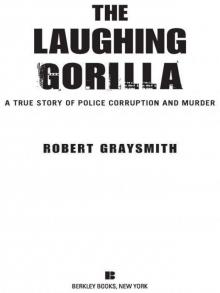 The Laughing Gorilla: A True Story of Police Corruption and Murder
The Laughing Gorilla: A True Story of Police Corruption and Murder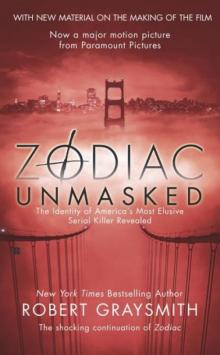 Zodiac Unmasked: The Identity of America's Most Elusive Serial Killer Revealed
Zodiac Unmasked: The Identity of America's Most Elusive Serial Killer Revealed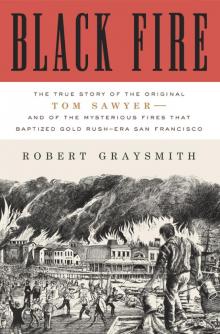 Black Fire: The True Story of the Original Tom Sawyer
Black Fire: The True Story of the Original Tom Sawyer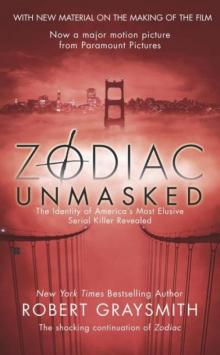 Zodiac Unmasked: The Identity of America's Most Elusive Serial Killers Revealed
Zodiac Unmasked: The Identity of America's Most Elusive Serial Killers Revealed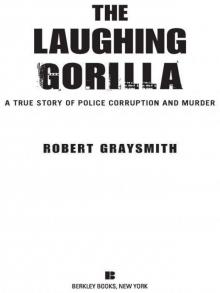 The Laughing Gorilla
The Laughing Gorilla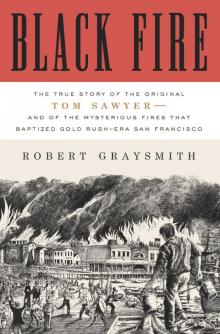 Black Fire
Black Fire